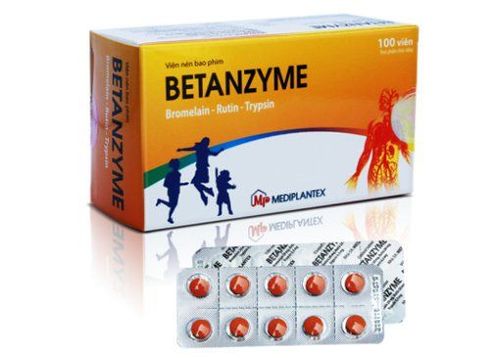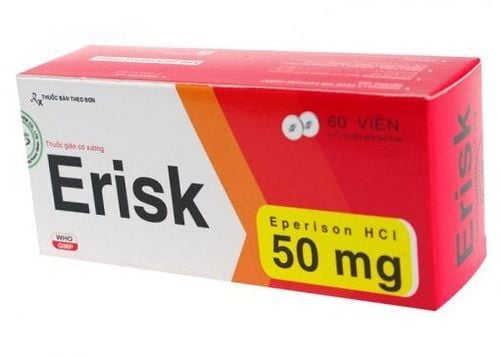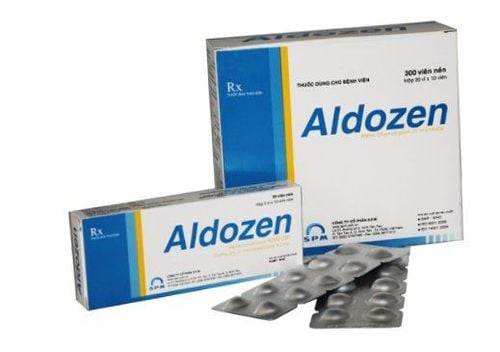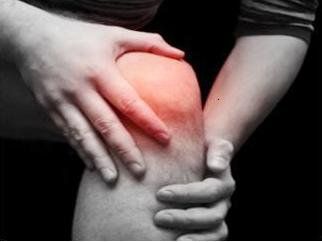This is an automatically translated article.
Muscle relaxants are used to reduce muscle spasms that can be caused by a number of conditions affecting the nervous system. Conditions that can cause muscle spasms include multiple sclerosis, motor neurone disease, and cerebral palsy. Muscle spasms and strains can also lead to long-term head or back injuries. Muscle spasms can also occur as part of a shorter-term condition or injury, such as low back pain or whiplash. Medicines that help the muscles relax can also relieve pain and discomfort.
1. What are muscle relaxants and how do they work?
Muscle relaxants are drugs that relax muscles to prevent spasms. Conditions such as multiple sclerosis and cerebral palsy affect the muscles. Sports injuries or those from a car accident can cause low back pain or pain. Muscle relaxants relax muscles, reducing pain and discomfort. Some of the most commonly prescribed muscle relaxants are:
Baclofen Tizanidine Carisoprodol Orphenadrine Chlorzoxazone Methocarbamol Cyclobenzaprine Metaxalone Dantrolene A muscle relaxant that works by relaxing the muscle so that it no longer spasms. Some work on the central nervous system while others work directly on the muscles. Muscle relaxants are available only by prescription, and they usually come in tablet, capsule, or liquid form. Some are administered as injections and cannabis extracts are sprayed into the mouth. Your doctor will prescribe the right medicine for your condition. You cannot buy this over-the-counter drug. Never share your prescription with others or take someone else's muscle relaxant. Also, do not mix them with antihistamines or alcohol.
Different drugs on the muscle relaxant list work differently. Some are better to use in some conditions than others. While all of these drugs can cause drowsiness, they differ in the other side effects they cause. Some lead to loss of appetite, nausea, stomach pain, dark urine, and yellowing of the skin or eyes. Others cause confusion, headaches, or general muscle weakness. Some side effects are minimal, while others can be serious. One example is cyclobenzaprine, which can cause hearing problems or heart failure.
Some muscle relaxants can lead to dependence if taken for too long. For example, if you take diazepam for longer than two weeks, you may become dependent on it. If that happens, stopping the drug suddenly will lead to withdrawal symptoms. These include vomiting, anxiety, and insomnia.
People with certain medical conditions should not take certain muscle relaxants. People with stomach ulcers or epilepsy, diabetes, or mental health problems are advised not to take baclofen. People with lung problems should avoid taking diazepam, and dantrolene is not recommended for people with heart, liver, or breathing problems.
2. Muscle relaxants
Muscle relaxants include the following classes of drugs: antispasmodic and antispasmodic:
Muscle relaxants act directly on the spinal cord or skeletal muscles with the aim of improving muscle tension and spasm. Antispasmodics help reduce muscle spasms through the central nervous system. They inhibit the conduction of nerve cells in the brain. Antispasmodics have different indications and side effects. Because these drugs work differently, a person should never use them as a substitute or substitute one for another.
3. Muscle relaxants
3.1. Methocarbamol Methocarbamol is a medication that has been well studied for the treatment of back pain. It is also cheap and relatively less sedating than other options. In recent studies when it was used for up to 8 days, 44% of people using methocarbamol experienced complete pain relief and that didn't have any serious side effects.
Taking 1500 mg every 6 to 8 hours is a cheap and tolerable option for people with acute neck and back pain. Think about trying this first, as it is less sedating than other options, like cyclobenzaprine and carisoprodol.
3.2. Cyclobenzaprine At standard doses of 10 mg to 30 mg a day, cyclobenzaprine will make you drowsy. If you use it during the day, you'll want to split your 10mg in half and take 5mg to reduce drowsiness. Interestingly, 5 mg three times a day has been shown in studies to work as well as 10 mg taken three times a day.
Cyclobenzaprine is a reasonable first choice because it is a cheap generic drug, but the side effects of sedation limit its use during the day. It can also cause more dry mouth, especially in older people. If this is a concern, consider a better non-sedative option.
3.3. Carisoprodol Many people believe that carisoprodol should be phased out as a muscle relaxant in order to have better options. If prescribed, you should only use it for a short time of 2 to 3 weeks because there is no evidence of effectiveness with longer use. The drug can cause drowsiness and dizziness, and is not recommended for people over 65 years old
3.4. Metaxalone Taken as 800mg tablets 3 to 4 times a day, metaxalone has the least reported adverse events and lowest sedation among muscle relaxants based on clinical studies. Simply put, it is best tolerated of the muscle relaxants.
Metaxalone is a generic substitute for the brand name Skelaxin but it is still expensive. Having said that, it works just as well as cyclobenzaprine and carisoprodol with fewer side effects and less sedation.
3.5. Tizanidine Tizanidine is commonly used for spasticity in patients with multiple sclerosis or cerebral palsy. Spasticity is where the muscles are repeatedly contracted, resulting in tension and stiffness. In direct studies with Baclofen for those conditions, tizanidine tended to have fewer side effects but both worked. However, it is not the first choice for acute pain in the neck or back.
3.6. Baclofen Similar to tizanidine, Baclofen is mainly used to treat spasticity in patients with spinal cord injury or those with multiple sclerosis. Up to 20% of people who take it are drowsy and there are better options for neck and back pain.
3.7. Oxazepam and diazepam Benzodiazepines such as Oxazepam and Diazepam are sometimes prescribed as muscle relaxants. However, they're really not recommended as they don't work well, are sedative, and can be habit-forming. Avoid benzodiazepines for neck and back pain because there are better options.
3.8. Chlorzoxazone Chlorzoxazone has not been well studied in acute low back and neck pain in adults. And when investigated for pain after spinal surgery, it was not found to be effective. Chlorzoxazone has also been reported as a rare cause of acute hepatotoxicity. Do not select this until you have exhausted all other options.
4. What do muscle relaxants do?
One of the most common reasons doctors prescribe muscle relaxants is low back pain. That's because it's one of the most common complaints people have. An estimated 80% of all people will experience low back pain during their lifetime. The most common causes of acute low back pain are sprains or strains. These tendon or muscle tears are the result of twisting or lifting heavy objects.
Other causes of lower back pain include degenerative, herniated or ruptured discs, sciatica, spinal stenosis, and injuries from car accidents or sports. Less common causes include kidney stones, tumors, infections, and fibromyalgia.
Most of the time, doctors will prescribe muscle relaxants only for acute pain conditions. Your doctor will investigate the cause of your pain and determine the best treatment plan. They may recommend that you take an over-the-counter pain reliever such as acetaminophen or ibuprofen first. If NSAIDs don't work, they may prescribe prescription pain relievers or muscle relaxants to help relieve your pain. You will probably need to take the following medication at night to help you sleep and keep you from getting sleepy during the day.
Your doctor may recommend additional treatments to help control your pain and increase your use of muscle relaxants. Be sure to follow your doctor's advice and take your medication only as prescribed. Some tips to optimize your pain treatment include:
Ice or heat can reduce inflammation and relieve pain. Do stretching and strengthening exercises to keep muscles flexible. Avoid activities that aggravate your pain. Consider joining a physical therapy program to help strengthen the muscles that support the lower back. Talk to your doctor about any generic or over-the-counter medications you're taking. There may be a risk of an interaction that could cause serious side effects from muscle relaxants.
5. How should muscle relaxants be taken?
These drugs are usually taken by mouth (tablets, capsules, or liquids). In general, your doctor will start with a low dose and gradually increase this dose over several weeks. This is to help your body get used to these drugs.
6. What are the possible side effects?
As with most drugs, muscle relaxants have some possible side effects. However, not everyone experiences them, and they usually improve as your body adapts to the new drug. Most muscle relaxants cause muscle weakness as a side effect. It is not possible in this leaflet to list all the possible side effects for these medicines. However, see below for a list of the most common side effects. For more detailed information, see the leaflet that comes with the pack.
Baclofen: feeling sick, tired, sleepy, vision problems, weakness, dizziness, lightheadedness, headache, dry mouth, trouble breathing, muscle aches, trouble sleeping or having nightmares, cold anxiety or agitation, confusion, unsteadiness, increased need to urinate, tremors, increased sweating, and skin rash. Dantrolene: feeling dizzy, drowsy, tired, or generally unwell, diarrhea, feeling or being sick, stomach (abdominal) pain, headache, loss of appetite, rash, trouble speaking or seeing, heat altitude (fever), chills, shortness of breath, convulsions. It can also cause inflammation of the lining around the heart (sometimes with fluid in the lungs). Hepatotoxicity is also a possible side effect of dantrolene. Diazepam: feeling drowsy, weak or lightheaded, forgetful, feeling confused or unsteady, feeling (or aggressive). Methocarbamol: forgetfulness, allergic reactions, anxiety, blurred vision, slow heartbeat, confusion or dizziness, headache, heartburn, feeling sick, itching, rash and low blood pressure.
7. Who can't take muscle relaxants?
For a complete list of who should not take each muscle relaxant, refer to the leaflet specific to that drug:
People with stomach ulcers, epilepsy, mental health problems or Diabetics should not take Baclofen. People with liver, heart, or breathing problems should not take Dantrolene. Diazepam should be avoided in people with severe breathing difficulties: for example, people with myasthenia gravis and people with lung problems. Elderly people or people with serious liver problems should not take Tizanidine. Methocarbamol should not be used by people with myasthenia gravis or severe breathing difficulties. It also should not be used by people with epilepsy or brain damage.
Please dial HOTLINE for more information or register for an appointment HERE. Download MyVinmec app to make appointments faster and to manage your bookings easily.













